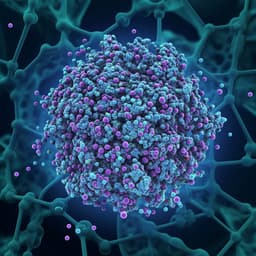
Medicine and Health
Dynamic O-GlcNAcylation coordinates ferritinophagy and mitophagy to activate ferroptosis
F. Yu, Q. Zhang, et al.
Discover how researchers Fan Yu and colleagues uncover the intricate relationship between O-GlcNAcylation, ferroptosis, and iron metabolism. This groundbreaking study reveals the role of O-GlcNAcylation in orchestrating cellular processes that influence sensitivity to ferroptosis, highlighting potential therapeutic avenues in combating cell death.
~3 min • Beginner • English
Related Publications
Explore these studies to deepen your understanding of the subject.







